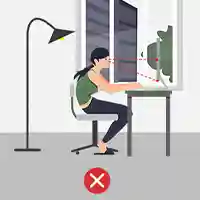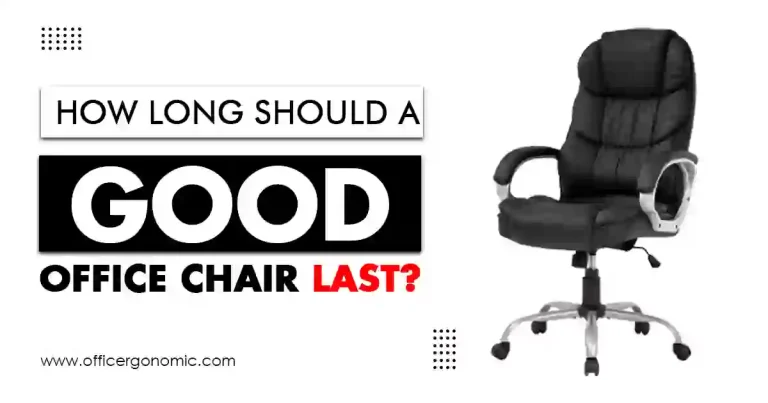Disadvantages of Standing Desks
Is it okay to use a standing desk all day? This question often pops up in our minds whenever we try to make healthy choices at our workplace. It is believed that standing brings a lot of health benefits for a person in contrast to just sitting in a comfortable chair before one’s desk.
It can ensure more productivity in your tasks in addition to burning some stubborn calories. But if you are seeking the most perfect office interior in the shape of standing desks, hold on!
You have to realize that perfection is not acquirable and so is the case with a standing desk. Using a standing desk for a prolonged time period can cause you undesirable conditions, some of which are discussed in this article.
What Type of Health Disadvantages do Standing Desks Bring?
Among the disadvantages of standing desks, health problems are at the top of the list. Here are some of the health issues you may face while using a standing desk:
Poor blood circulation
It is a fact that a standing position makes your brain more alert and efficient. You are more attentive and less passive. But these benefits do not determine how long you should stand at a standing desk.
A scientific study proves that prolonged standing considerably hinders the blood flow to the loaded muscles. Inadequate blood supply causes sore feet, cramping muscles, and achy legs, especially behind your knees.
Your ankles, feet, and vertebral column can also feel numb and temporarily become inactive. So, instead of getting the health benefits of stand-up desks, you end up with multiple health risks.
Vision Stress
If the position of your monitor or laptop screen is not set at an adequate height on a standing desk this will put immense pressure on your eyesight and can cause visionary discomfort.
Risk for bad posture
Your core gets stronger as you stand, which helps keep your body in optimal alignment, loosens your joints, and encourages fluid motions of your legs and upper body. This happens only when your body is correctly aligned.
In other words, when you stand, your head, neck, and spine all should be in a straight line, and your wrists should be flat on the desk with your elbows at a 90-degree angle. Practically speaking, you cannot maintain this position all day.
Even if you attempt, the muscles that support an upright posture in the knees, back, and neck will ultimately get fatigued and distressed.
Vein inflammation
Working environments that provide long spans of standing during office hours surely elevate the risk of getting inflamed veins for employees.
Veins get inflamed if you continue to stand for a long time because your blood does not flow with much ease. The blood pools up in your veins, and consequently, your veins become enlarged and swollen.
This condition may worsen over time and may also result in the development of blood clots. The pulmonary arteries that carry blood to your lungs might get blocked if these clots break off and move up your body. The blood clots themselves have the potential to hurt and cause edema in the affected limb.
Excessive inactivity
A sedentary lifestyle causes the majority of the negative consequences of prolonged sitting. Your cardiovascular system deteriorates as a result of not receiving enough stimulation. You start to build up a dangerous quantity of body fat as a result of your metabolic processes becoming out of whack.
So, the advice to stand up frequently during work is meant to get your body moving. Short bursts of physical activity improve your blood circulation along with some other health benefits.
However, standing desks may not always motivate you to get up and walk about. Ironically, standing desks may also encourage idleness as tables and chairs. Even if you feel more exhausted if you stand up all day, you are virtually as lethargic as someone who sits all day.
Insufficient calorie burn
Standing consumes more calories than sitting since it requires more effort on your part to maintain a good posture. However, the additional energy expenditure is minimal.
According to scientific research, standing at a desk for three hours burns an additional 24 calories as compared to sitting, roughly the same amount as a carrot. However, if you walk for only 30 minutes over your lunch break, you may burn an extra 100 calories per day.
Any calorie burn is important, of course. Here, the risk arises when employees begin to overlook the necessity of including brief aerobic workouts in their routine.
Physical Disadvantages of Standing Desks
Some of the physical disadvantages of standing desks are listed below:
Difficulty during transitioning
Traditional desks and chairs are more commonly used by employees who are more accustomed to them. Many employees may be taken aback when standing desks are introduced, especially since they must adjust to the new biomechanics.
Without the right assistance, your staff members could experience lower work satisfaction and more stress. This directly affects their comfort which in turn decreases their productivity.
Lack of uninterrupted concentration
Undoubtedly, standing desks offer better chances of having beneficial conversations with your colleagues. So, instead of sending emails or notices, you can communicate directly. Still, standing desks may not be favorable if your office tasks need a great deal of centralization.
This arrangement offers more frequent interactions with your officemates. While standing at a standing desk, you can exchange looks, smiles, and small chit-chats.
This may result in unmet deadlines as you are deprived of the uninterrupted focus you need. Lower concentration levels increase the likelihood of making mistakes, many of which might have a detrimental influence on the company.
Inconvenient for laptop users
When switching to standing workstations, laptop users are at a greater risk for poor posture because the keyboard and monitor are linked.
If you are a laptop user, you may notice that on many standing desks, your head leans too far forward or that your wrists and arms continue to be bent.
This might make the situation even more challenging to adopt the right posture with the laptop and make it more difficult to work for long periods.
Lack of privacy
Working while standing before a sit-stand desk, you are the vision of every eye. None of your actions is private or limited to yourself.
Rather, anyone can see you while struggling to do the most confidential tasks e.g. picking your nose, scratching your butt, trying to stifle your yawn, secretly cleaning the spilled tea/coffee on your desk.
Difficulty while having lunch
Are standing desks better? The answer to this question becomes easy when it comes to having relevance with your lunchtime at the office. The benefits of standing desks vs sitting might appeal to you to opt for one but if your workplace is an “eat-at-your-desk” sort of environment (like newsrooms), this might make lunch uncomfortable.
It’s challenging to eat while standing at your workstation. My recommendation is to reserve a table or eat elsewhere. If you must work and eat, be cautious of spillage. Furthermore, you have to be extra careful regarding your dining etiquette as every one may see you eat.
Uncomfortable for older employees
Older workers could not benefit from standing desks since they might become tired more easily. For older workers, the tiredness this equipment creates might make it more difficult for them to focus on their tasks.
Additionally, age-related medical issues like arthritis may make it difficult for older workers to stand. When pressure is applied to their joints, those who have this condition may experience excruciating agony. Because of this, standing desk users are unlikely to perform effectively at work.
Cost Disadvantages of Standing Desks
Standing desks can also incur an extra cost because of several reasons, such as:
Requirement of Chairs
Note that even if you transition to standing workstations, you will still need seats. Employees must take breaks to avoid many of the health concerns connected with sitting for prolonged periods.
As a result, despite the availability of standing desks, employers will still have to invest in comfortable chairs for shifting between sitting and standing positions.
Requirement of better flooring
Changing the flooring is one intervention to minimize the health risks of standing desks. Employees would like a sturdy floor that would relieve the strain on their feet from all of the standings. Of course, altering the carpet will increase the costs associated with switching to standing desks.
Need for New Shoes
When someone stands, their whole weight is supported by their feet. Employees would soon develop calluses and painful swelling in feet due to prolonged standing at the standing desk.
To lessen pressure points and provide adequate foot support, workers would need to change shoes. They could, however, object if the company makes them pay for a new pair, which would be pricey. Expect the company to pay greater fees if it chooses to cover the expense.
Tips to Minimize the Perils of Standing Desks!
Now the question arises “How long one should stand at a sit-stand desk?“ and the answer is “not more than 2-3 hours per day during the initial one or two weeks”.
However, apart from this, you also need to do several things in order to lessen the drawbacks of a standing desk. Here are a few actions you may take:
- Use a gel mat or an anti-fatigue mat or a yoga mat. It will help support your feet and prevent foot pain and other problems.
- Try to maintain an upright posture.
- Put on comfy shoes with arch support.
- Never cradle your phone while working; doing so will cause muscle fatigue.
- Using an ergonomic desk can help you feel more invigorated naturally, improve your posture, feel less muscle soreness and other associated problems, and enjoy your job.
Last Thoughts!
In sum, if you sit or stand excessively, it’s not good for you, just like anything else. Therefore, always try to strike a balance. If you’re standing at a standing desk for too long, take a break and sit down, and if you’re sitting for a long time, stand up for some time.
In any case, if you don’t take breaks, you may end up hurting yourself physically, mentally, and financially. We hope this article has helped you find out the disadvantages of sit-stand desks and now you’ll be mindful of using a standing desk.











